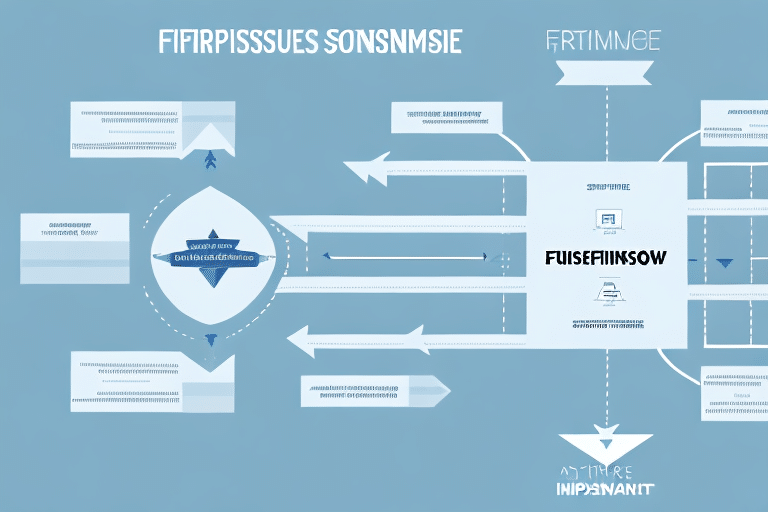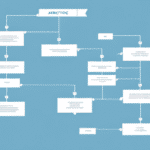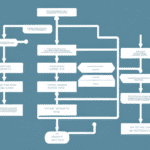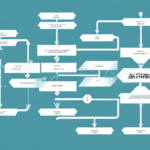Creating an Effective Shipping Software Fulfillment Flowchart
Shipping is a critical component of any e-commerce business, requiring a well-designed and efficient process. A shipping software fulfillment flowchart helps businesses manage and streamline their shipping operations. In this article, we'll explore the importance of a shipping software fulfillment flowchart, its key components, how to identify areas for improvement, selecting the right shipping software, integrating it into your flowchart, defining roles and responsibilities, designing a clear flowchart, measuring success, troubleshooting common issues, and maintaining an effective flowchart over time.
Why a Shipping Software Fulfillment Flowchart is Essential
A shipping software fulfillment flowchart is crucial for businesses to keep their shipping processes organized and efficient. With a well-designed flowchart, businesses can optimize their shipping operations, reduce costs, and enhance customer satisfaction. Shipping involves multiple tasks, and a flowchart helps businesses track every step in the process, ensuring smooth completion of all activities.
One of the key benefits of using a shipping software fulfillment flowchart is the ability to identify bottlenecks and inefficiencies in shipping operations. According to a Forbes article, optimizing shipping processes can lead to faster shipping times, lower costs, and higher customer satisfaction rates.
Additionally, a shipping software fulfillment flowchart ensures compliance with shipping regulations and requirements. By including all necessary steps and documentation, businesses can meet legal and regulatory standards, avoiding costly fines and maintaining a positive industry reputation.
Key Components of a Fulfillment Flowchart
A comprehensive fulfillment flowchart typically includes the following components:
- Order Receipt
- Order Processing
- Picking and Packing
- Shipping
- Return/Exchange Processing
Each component plays a vital role in the end-to-end shipping process, ensuring that orders are handled efficiently from receipt to delivery.
Order Receipt
The initial step involves receiving orders from customers through various channels such as online platforms or in-store purchases. Efficient order receipt systems can significantly reduce processing time.
Return/Exchange Processing
Managing returns and exchanges is crucial for maintaining customer satisfaction. An effective flowchart includes steps for handling these processes smoothly and efficiently.
Analyzing and Improving Shipping Processes
Before creating a shipping software fulfillment flowchart, it's essential to analyze current shipping processes to identify inefficiencies or bottlenecks. This involves examining order receipt, processing, picking, packing, shipping, and return handling.
Cost Analysis
Evaluate shipping-related expenses such as packaging materials, shipping fees, and labor costs. Identifying areas where costs can be reduced without compromising quality can enhance profitability.
Customer Satisfaction
Analyze customer feedback and reviews to uncover common shipping-related issues. Addressing these concerns can lead to improved customer satisfaction and loyalty.
According to a study by McKinsey & Company, optimizing fulfillment processes can reduce costs by up to 30% while improving delivery speeds.
Selecting the Right Shipping Software
Choosing the appropriate shipping software is critical for enhancing your shipping process. The right software should align with your business goals, cater to customer needs, manage all shipping stages, and integrate seamlessly with your e-commerce platform.
Automation Capabilities
Automated shipping software can save time and reduce errors by generating shipping labels, tracking numbers, and customs documents automatically. This is particularly beneficial for businesses handling high volumes or international orders.
Integration with E-commerce Platforms
Ensure that the shipping software integrates smoothly with your existing e-commerce platform. Compatibility with systems like Shopify, WooCommerce, or Magento can streamline order processing and fulfillment.
For further guidance on selecting shipping software, refer to Shopify's guide on shipping software.
Integrating Shipping Software into Your Fulfillment Flowchart
Integrating shipping software into your fulfillment flowchart requires careful planning to ensure it fits seamlessly into your existing workflow. This includes incorporating steps like order preparation, scheduling pickups, and tracking orders within the flowchart.
System Compatibility
Work with your IT department to ensure that the shipping software is compatible with your inventory management and order processing systems. This integration is essential for maintaining data consistency and operational efficiency.
Automation Features
Leverage advanced automation features such as automatic label printing and carrier selection based on shipping destination. These features can streamline processes and minimize manual errors.
Measuring and Maintaining Your Fulfillment Flowchart
After implementing your shipping software fulfillment flowchart, it's essential to measure its effectiveness and make necessary adjustments to ensure ongoing efficiency.
Key Performance Indicators (KPIs)
Monitor KPIs such as shipping time, order accuracy, and customer satisfaction to evaluate the flowchart's performance. Use these metrics to identify areas for improvement.
Regular Audits and Updates
Regularly audit your flowchart to identify and address any bottlenecks or inefficiencies. Stay updated with new technologies and best practices to continually enhance your shipping processes.
Research from Harvard Business Review highlights the importance of continuous improvement in supply chain management to maintain competitiveness.
Conclusion: Enhancing Your Shipping Operations with Fulfillment Flowcharts
A shipping software fulfillment flowchart is an indispensable tool for achieving an efficient and cost-effective shipping process. It enables businesses to optimize operations by improving communication, identifying areas for improvement, and measuring success. Implementing a well-designed flowchart can lead to faster shipping times, reduced costs, and increased customer satisfaction, ultimately driving business growth and profitability.
By mapping out the entire shipping process, businesses can easily identify potential bottlenecks and implement solutions to address them. This not only enhances operational efficiency but also ensures that customers receive their orders promptly and in excellent condition.
Investing in a robust shipping software fulfillment flowchart is a strategic move that can significantly improve your shipping operations and contribute to the overall success of your e-commerce business.






















